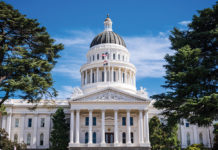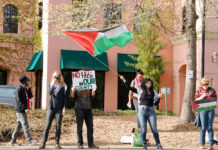The Jewish festival of Passover, the moveable feast of Easter
Season with Good Friday, Palm Sunday and Ascension Day and the
hippity-hop arrival of the Easter Bunny all take place here in the
middle of April.
All these celebrations, customs and symbolisms make for a very
colorful and rich set of holidays that mark the advent of
springtime and a new season of fertility and renewed hope.
But there is also a very somber series of messages to be found
in the origins of these “moveable feasts.”
At Passover, Jews gather at sundown (April 18 this year) to
begin an eight-day celebration. A special Seder table is set for
the first two days to mark the Exodus of the Israelite slaves from
Pharaoh’s Egypt over 3,000 years ago.
Readings from the Haggadah are shared. This is the “telling” of
oppression, exile, slavery, genocide and the eventual escape to
freedom. The “re-telling” is meant to serve as a vivid reminder of
a personal and cultural history of liberation and spiritual
survival.
Christians share the Easter story of Jesus Christ in this same
way, re-telling the story of the Last Supper (a Passover Seder),
the foretold crucifixion and Christ’s resurrection, followed by
Ascension Day.
What the Easter Bunny and his colored eggs tells us is a little
less clear, except for the symbols of new life and fertility. But,
all stories and well-told words can share hopeful energies and
carry powerful reminders to overcome such transgressions as
oppression, slavery and prejudice.
This April, we are also reminded of another slave story, with
the 150th commemoration of the beginning of the U.S. Civil War.
Hundreds of thousands of Union and Confederate soldiers died over
the question of slavery. The honest “re-telling” of this conflict
should be likened to the Jews’ Passover from Egypt, as well as with
current world conflicts in the Middle East, China, Tibet and many
parts of Africa where oppression, genocide and discrimination
continue.
Just as oppression and violence did not end for the Israelites
at Passover 3,000 years ago, freedom did not come to Black
Americans as soon as Abraham Lincoln signed the Emancipation
Proclamation in 1863.
A reading of a Haggadah about slavery and Civil Rights for
Afro-American ex-slaves in the United States would include many
long chapters covering a violent and bloody century of lynchings,
church firebombings and assassinations. As few as 50 years ago,
children of former slaves were being attacked with K-9 dogs and
firehoses. The Ku Klux Klan flaunted their violent prejudice and
southern political leaders filibustered against the Civil Rights
Act of 1963. As we launch a “re-telling” of the Civil War, we hope
it includes the following 150 years of the ex-slaves fight for
freedom that is still being waged today in parts of our
country.
Many generations of Jewish children have been told the Haggadah
of Passover. And, for Christians, the donkey ride of Jesus on Palm
Sunday, the Last Supper and the crucifixion on the cross are living
Bible School stories that will again be shared this Easter.
But, in so many parts of our world these days, we see people and
cultures clashing in violent struggles to escape oppression and
find their own freedom. In places like Africa the oppression comes
in the form of poverty, hunger and disease. In Tibet, the people
have been under 50 years of political tyranny by the Chinese.
Tibetans are forbidden from practicing their Buddhist religion in
public and 6,000 monasteries have been destroyed while their
leader, the Dalai Lama, lives in exile.
By tradition, the Jewish Passover Seder ends with the prayer,
“next year in Jerusalem,” as a reminder of the ancient dream to be
exiled from slavery and return home.
This Easter time we should be reminded that the world is full of
many Jerusalems.
— Rollie Atkinson
53.9
F
Healdsburg
April 19, 2025







